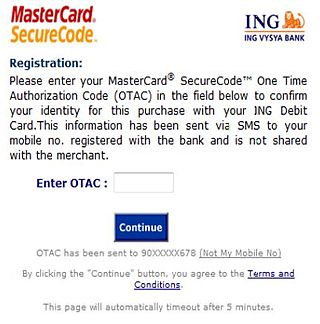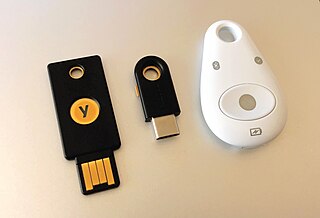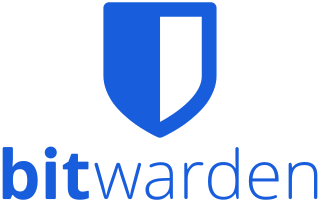Hushmail is an encrypted proprietary web-based email service offering PGP-encrypted e-mail and vanity domain service. Hushmail uses OpenPGP standards. If public encryption keys are available to both recipient and sender, Hushmail can convey authenticated, encrypted messages in both directions. For recipients for whom no public key is available, Hushmail will allow a message to be encrypted by a password and stored for pickup by the recipient, or the message can be sent in cleartext. In July 2016, the company launched an iOS app that offers end-to-end encryption and full integration with the webmail settings. The company is located in Vancouver, British Columbia, Canada.
FileVault is a disk encryption program in Mac OS X 10.3 Panther (2003) and later. It performs on-the-fly encryption with volumes on Mac computers.
Single sign-on (SSO) is an authentication scheme that allows a user to log in with a single ID to any of several related, yet independent, software systems.

A one-time password (OTP), also known as a one-time PIN, one-time authorization code (OTAC) or dynamic password, is a password that is valid for only one login session or transaction, on a computer system or other digital device. OTPs avoid several shortcomings that are associated with traditional (static) password-based authentication; a number of implementations also incorporate two-factor authentication by ensuring that the one-time password requires access to something a person has as well as something a person knows.

Keychain is the password management system in macOS, developed by Apple. It was introduced with Mac OS 8.6, and has been included in all subsequent versions of the operating system, now known as macOS. A Keychain can contain various types of data: passwords, private keys, certificates, and secure notes.
The following tables compare general and technical information for a number of notable webmail providers who offer a web interface in English.
A Google Account is a user account that is required for access, authentication and authorization to certain online Google services. It is also often used as single sign-on for third party services.
Password fatigue is the feeling experienced by many people who are required to remember an excessive number of passwords as part of their daily routine, such as to log in to a computer at work, undo a bicycle lock or conduct banking from an automated teller machine. The concept is also known as password chaos, or more broadly as identity chaos.
MobileMe is a discontinued subscription-based collection of online services and software offered by Apple Inc. All services were gradually transitioned to and eventually replaced by the free iCloud, and MobileMe ceased on June 30, 2012, with transfers to iCloud being available until July 31, 2012, or data being available for download until that date, when the site finally closed completely. On that date all data was deleted, and email addresses of accounts not transferred to iCloud were marked as unused.
LastPass is a password manager application. The standard version of LastPass comes with a web interface, but also includes plugins for various web browsers and apps for many smartphones. It also includes support for bookmarklets.

Multi-factor authentication is an electronic authentication method in which a user is granted access to a website or application only after successfully presenting two or more pieces of evidence to an authentication mechanism. MFA protects personal data—which may include personal identification or financial assets—from being accessed by an unauthorized third party that may have been able to discover, for example, a single password.

iCloud is a cloud service developed by Apple Inc. Launched on October 12, 2011, iCloud enables users to store and sync data across devices, including Apple Mail, Apple Calendar, Apple Photos, Apple Notes, contacts, settings, backups, and files, to collaborate with other users, and track assets through Find My. It is built into iOS, iPadOS, watchOS, tvOS, macOS, and visionOS. iCloud may additionally be accessed through a limited web interface and Windows application.

Apple Wallet is a digital wallet developed by Apple Inc. and included with iOS and watchOS that allows users to store Wallet passes such as coupons, boarding passes, student ID cards, government ID cards, business credentials, resort passes, car keys, home keys, event tickets, public transportation passes, store cards, and – starting with iOS 8.1 – credit cards, and debit cards for use via Apple Pay.

Touch ID is an electronic fingerprint recognition feature designed and released by Apple Inc. that allows users to unlock devices, make purchases in the various Apple digital media stores, and authenticate Apple Pay online or in apps. It can also be used to lock and unlock password-protected notes on iPhone and iPad. Touch ID was first introduced in iPhones with the iPhone 5s in 2013. In 2015, Apple introduced a faster second-generation Touch ID in the iPhone 6s; a year later in 2016, it made its laptop debut in the MacBook Pro integrated on the right side of the Touch Bar. Touch ID has been used on all iPads since the iPad Air 2 was introduced in 2014. In MacBooks, each user account can have up to three fingerprints, and a total of five fingerprints across the system. Fingerprint information is stored locally in a secure enclave on the Apple A7 and later chips, not in the cloud, a design choice intended to secure fingerprint information from users or malicious attackers.

Proton Mail is a Swiss end-to-end encrypted email service founded in 2013 headquartered in Plan-les-Ouates, Switzerland. It uses client-side encryption to protect email content and user data before they are sent to Proton Mail servers, unlike other common email providers such as Gmail and Outlook.com. The service can be accessed through a webmail client, the Tor network, Windows, macOS and Linux (beta) desktop apps and iOS and Android apps.
Threema is a paid cross-platform encrypted instant messaging app developed by Threema GmbH in Switzerland and launched in 2012. The service operates on a decentralized architecture and offers end-to-end encryption. Users can make voice and video calls, send photos, files, and voice notes, share locations, and make groups. Unlike many other popular secure messaging apps, Threema does not require phone numbers or email addresses for registration, only a one-time purchase that can be paid via an app store or anonymously with Bitcoin or cash.

Bitwarden is a freemium open-source password management service that stores sensitive information, such as website credentials, in an encrypted vault. The platform offers a variety of client applications, including a web interface, desktop applications, browser extensions, mobile apps, and a command-line interface. Bitwarden offers a free US or European cloud-hosted service as well as the ability to self-host.
Smart-ID is an electronic authentication tool developed by SK ID Solutions, an Estonian company. Users can log in to various electronic services and sign documents with an electronic signature.
Microsoft Autofill is a password manager developed by Microsoft. It supports multiple platforms such as Android, iOS, and Google Chrome browser. It is a part of Microsoft Authenticator app in Android and iOS, and a browser extension on Google Chrome. It stores users' passwords under the user's Microsoft Account. It can import passwords from Chrome and some popular password managers or from a CSV file. In Microsoft Authenticator app, it requires multi-factor authentication to sign in which provides an additional layer of security. The passwords are encrypted both on the device and the cloud.
The iOS operating system utilizes many security features in both hardware and software, from the boot process to biometrics.







